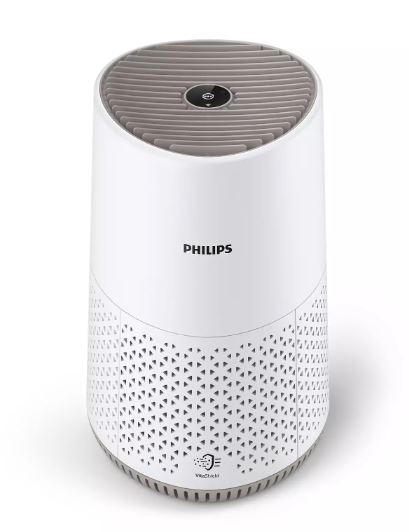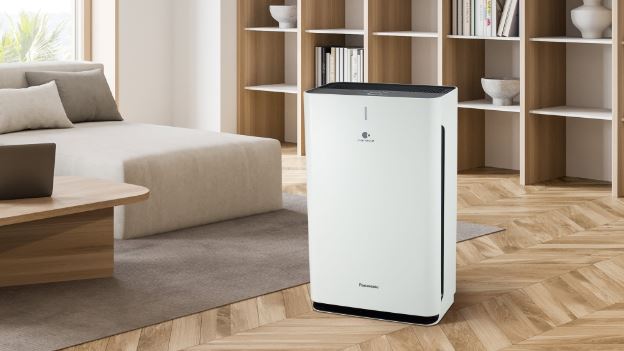In a health-conscious world, the air quality indoors and out has become an increasingly important consideration for homeowners and health-conscious individuals. With increasing environmental pollution and a better understanding of the influence of indoor air quality on overall health on our health, it's no surprise that the demand for air purifiers is on the rise.
Air purifiers are devices that clean the air of pollutants in a space, enhancing the air we breathe indoors. They are particularly beneficial for those with allergies, asthma, or respiratory concerns as they can drastically decrease the amount of allergens, pollutants, and irritants in the air. Even healthy individuals can take advantage of air purifiers, as they offer peace of mind and an extra layer of protection against airborne illnesses.
This guide will dive deep into the world of air purifiers, exploring their benefits, the variety of options on the market, essential factors when making a purchasing decision, and maximizing your air purifier's potential. By the end, you should have a comprehensive understanding of air purifiers and be able to make an informed decision about whether investing in one is the right choice for you and your family.

Understanding Air Pollutants and Their Effects on Well-being
To understand why air purifiers are essential, it's key to comprehending the variety of contaminants they address and the potential consequences of exposure to these contaminants.
Indoor air pollutants can be broadly categorized into three main types:
- Airborne Particles: This includes solid and liquid droplets suspended in the air. Examples include pollen, smoke, dust, pet dander, and mold spores, to name a few. Particulate matter can trigger respiratory problems and cause allergic flare-ups.
- Understanding Volatile Organic Compounds: VOCs are gases released by solids and liquids. Sources of VOCs include cleaning agents, paints, aerosol sprays, pesticides, and similar products. Exposure to VOCs can lead to eye, nose, throat irritation, headaches, and stomach discomfort.
- Biological Contaminants: These include various microorganisms, including bacteria, viruses, mold, and mildew. They can cause a range of health issues, from minor allergies to serious infections.
The impact of these contaminants on human health can greatly vary. For individuals with respiratory conditions or compromised immune systems, exposure to indoor air pollutants can lead to serious health issues. Even for healthy people, prolonged exposure over time to certain pollutants can impact respiratory health and overall well-being over time.

The Science Behind Air Purifiers
Air purifiers use a range of physical and chemical mechanisms to effectively eliminate contaminants. Understanding the basic mechanisms employed by purifiers will help you appreciate their effectiveness and the array of models on the market.
Here are the primary mechanisms and innovations used in air purifiers:
- Filtration Excellence: This is the most common method used in air purifiers. It involves using filters to trap particles as air is passed through the filtration system. The filter composition can differ, each designed to trap particular particle types. For example:
- Pre-filters: These are usually the first line of attack, trapping bigger contaminants like hair and dust.
- HEPA Filters: The Gold Standard: HEPA filters are exceptionally efficient at trapping tiny particles, including bacteria, viruses, pollen, and dust mites. To be labeled a true HEPA filter, it must capture at least 99.97% of particles as small as 0.3 microns.
- carbon filtration: These filters are designed to adsorb odors, VOCs, and gaseous pollutants.
- The Power of Ionization: Ionizers use electricity to create negatively charged ions, which bind to particles in the air. The charged particles are drawn to nearby surfaces or the purifier itself.
- Ozone's Double-Edged Sword: Some air purifiers use ozone, a powerful oxidant, to break down pollutants. While effective, excessive ozone exposure carries risks so these types of purifiers should be used with moderation and in well-ventilated areas.
- Ultraviolet (UV) Light: UV light can be used to neutralize bacteria, viruses, and mold spores. UV light is commonly paired with filtration to capture particles first, followed by UV light to neutralize any remaining biological threats.
Choosing the Right Air Purifier
With a plethora of options available, selecting the right air purifier can be a daunting task. It's important to consider several factors to ensure you make the right choice for your specific needs and space.
Here are some crucial points to consider:
- Sizing Up the Room: Air purifiers are typically rated according to room size, so it's important to choose a model that can efficiently purify the air in the designated space. Most purifiers will list a maximum room coverage or CADR, which indicates the amount of purified air circulated per minute.
- Type of Contaminants: Identify the specific pollutants you want to target. If you suffer from allergies, look for a purifier with a true HEPA filter. For eliminating odors, consider a model with a carbon filter. If you're concerned about pathogenic microorganisms, a purifier with UV-C light might be best.
- Noise Level: Air purifiers can produce a range of noise outputs, so if you plan to use it in a quiet bedroom or tranquil space, look for models with a quiet mode for undisturbed rest.
- Long-term Considerations: Consider the ongoing costs and maintenance requirements of the purifier. HEPA filtration systems may need periodic replacement, depending on use and environmental factors. Include filter replacement costs in your calculations when making your choice.
- Additional Features: Many purifiers offer innovative smart capabilities like air quality sensors, automatic modes, and Wi-Fi connectivity, allowing convenient remote access and monitoring. These features can enhance the convenience and effectiveness of your purifier.
Optimizing Performance of Your Air Purifier
Once you've invested in an air purifier and set it up, there are several things you can do to ensure it operates at peak performance and delivers the maximum benefits:
- Optimal Placement: Position your purifier in an central location, free from obstacles, to ensure optimal airflow. Avoid placing it near windows or doors as drafts can interfere with its performance.
- Consistent Use: For the best results, it's recommended to run your purifier regularly. Many models have automatic or low-power settings that respond to air quality changes, so you can maintain clean air without running up a huge energy bill.
- Regular Filter Care: Regularly check and replace filters as recommended by the manufacturer. Over time, filters become clogged with particles, reducing the purifier's efficiency. Mark the date of replacement on your calendar so you don't forget.
- Reducing Indoor Contaminants: Alongside using an air purifier, take steps to reduce indoor pollutants. This could include vacuuming, dusting, choosing natural cleaning alternatives, and limiting aerosol and chemical products.
Comments on “Smart Air Purifiers: The Future of Clean Air is Here”